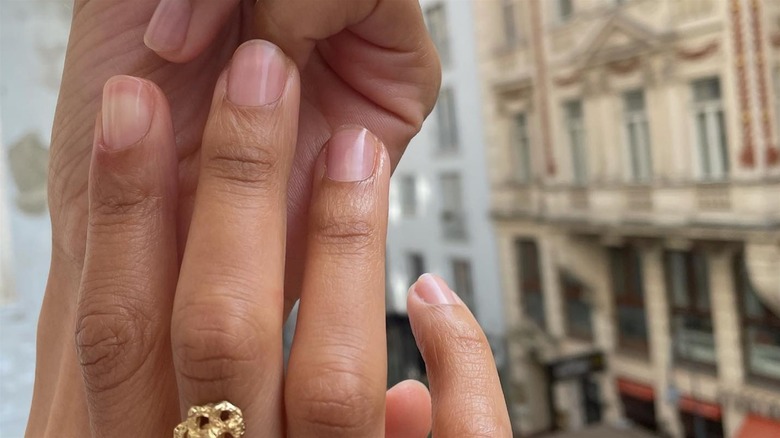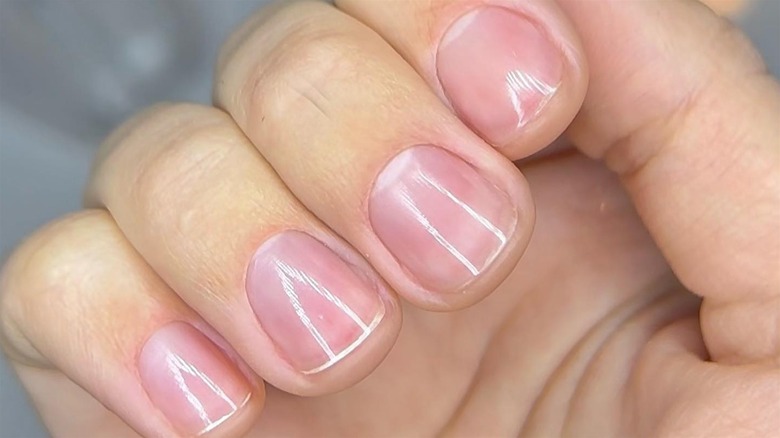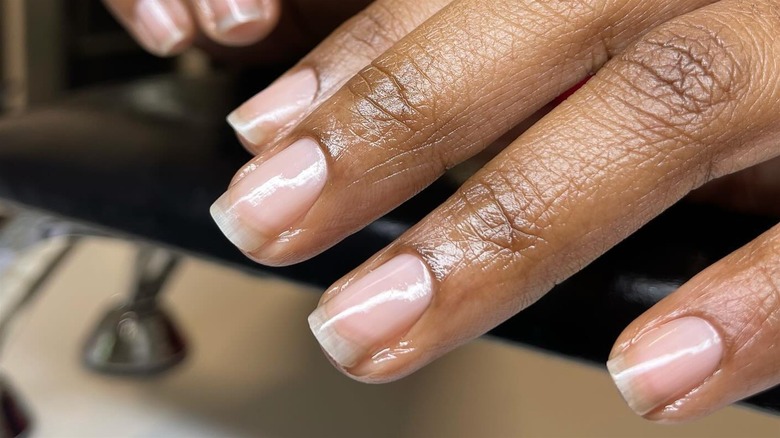What's A Japanese Manicure? The Gentle, Nail-Health Focused Experience, Explained
If you like to keep up with the latest nail happenings on social media, chances are you've heard of a Japanese manicure, (also known as the P-Shine manicure) by now. If you haven't though, that's okay, because we're here to explain exactly what this nail technique entails. Essentially, the big difference between a Japanese manicure and a U.S. one, or even a Ukrainian manicure for that matter, is about intention. While American manicures tend to focus on the final look through polish and nail art, a Japanese manicure is more about nail health. In other words, don't expect to go into for this type of Japanese manicure and come out with something like dramatic black chrome nails.
In the U.S., we've seen a lot of different nail tools and techniques introduced over the years that maybe aren't the healthiest for our nails — especially when we try to remove it (hard nail gel, we're looking at you). You won't find that in a Japanese manicure. As manicurist Ami Streets put it to Refinery29, the Japanese way is to keep things as simple and gentle as possible. "You're incorporating the application of oils, pushing back (but not cutting) the cuticles and providing a hand massage," she explained. This will create a glossy finish that strengths your talons.
What happens during a Japanese manicure
Similar to U.S. manicures, a Japanese manicure begins with the manicurist trimming and shaping the nail to your liking. From there, though, rather than apply polish to your nails, the manicurist will use a special buffing tool to apply a special paste made of ingredients like silica, bee pollen, keratin, and various mineral oils.
After that's buffed into the nail, your manicurist will typically apply a special powder made with beeswax. This step in particular is designed to strengthen the nail and create a clean, shiny finish. A video shared to Instagram by @kseniia.nailartist shows how the special mix helps to fills in nail ridges — which can be totally normal, but you should always check with your doctor — while effortlessly blending into the nail beds.
"The combination of wax and powder make your nails shiny. They fill in any ridges or bumps on your nail plate, and then the powder and wax mix will naturally come off over two weeks," nail artist Kseniia Pryzemyrska explained to Vogue, The shiny look, meanwhile, will also last for around 14 days. After this process, you'll start to see more of why Japanese manicures are like relaxing spa treatments. Most end with a hand massage (to aid blood flow) and the application of a cuticle oil, which you should be applying daily.
People with brittle nails can benefit from a Japanese manicure
A Japanese manicure is perfect for anyone who doesn't want a lot of bells and whistles when it comes to getting their nails done. If you love a simpler, more understated look (think your nails but better), this method is certainly worth looking into. You may also want to give this mani a go if you're particularly conscious about the chemicals that go into a lot of nail products and polishes. Since Japanese manicures focus on natural ingredients without a lot of the harsh chemicals we're used to seeing in U.S. salons.
A Japanese mani can also be a great alternative for anyone who's experiencing weak or damaged nails. If you're finding your natural talons are struggling after years of repeated gel manicures or applying things like long solar/regular acrylics, then this method can be a great way to get your nails back to healthier state before you carry on with your usual routine. "It's great for rest periods between gel polish or extensions, as you can get nails and hands back into optimum condition," Ami Streets confirmed to Refinery29. Equally, as this nail technique is all about strength and health, it's also particularly useful for those with naturally brittle or peeling nails.


